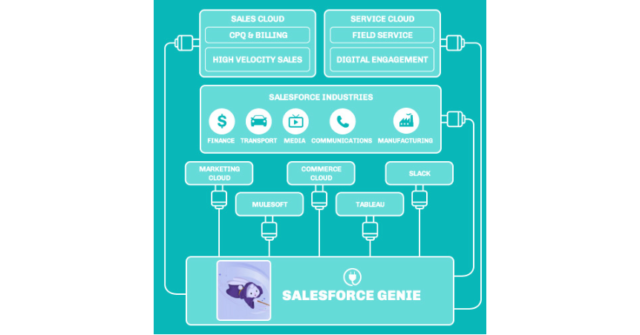What is CDP?
In Salesforce Marketing Cloud (SFMC), CDP stands for Customer Data Platform. It refers to a set of capabilities within SFMC that enable marketers to unify customer data from various sources, create comprehensive customer profiles, and activate this data across marketing channels for personalized engagement.
Key Aspects of CDP in Salesforce Marketing Cloud
- Data Integration: CDP in SFMC integrates data from multiple sources, such as CRM systems, transactional databases, web analytics, and third-party platforms. This integration allows marketers to have a consolidated view of each customer.
- Unified Customer Profiles: The CDP within SFMC creates unified customer profiles by combining data points from different channels and touchpoints. This unified view helps marketers understand customer behavior, preferences, and interactions across the customer journey.
- Segmentation and Audience Building: Using unified customer profiles, marketers can segment their audience based on various attributes and behaviors. This segmentation enables targeted and personalized marketing campaigns.
- Personalization: SFMC’s CDP enables marketers to deliver personalized experiences across email, mobile, social media, web, and other digital channels. Personalization is driven by insights derived from the unified customer profiles.
- Activation and Orchestration: Once customer data is unified and profiles are created, SFMC allows marketers to activate this data across channels through orchestrated campaigns. Marketers can automate and optimize customer journeys based on real-time data and insights.
- Analytics and Reporting: CDP in SFMC provides analytics and reporting capabilities to measure campaign performance, customer engagement, and ROI. Marketers can derive actionable insights to continually optimize their marketing efforts.
Types of CDP in Salesforce Marketing Cloud
In Salesforce Marketing Cloud, Customer Data Platforms are crucial in managing and leveraging customer data to drive personalized marketing efforts. Salesforce offers several options for integrating and utilizing CDP capabilities within its ecosystem.
- Insights CDP refers to the Salesforce Data Cloud capabilities that provide comprehensive customer insights through data integration and advanced analytics. It unifies customer data from various sources into a single profile, enabling real-time insights, advanced segmentation, and personalized marketing. This integration helps businesses understand customer behaviors, optimize campaigns, and enhance engagement through data-driven strategies.
- An Engagement CDP refers to a Customer Data Platform that integrates and manages customer data to drive personalized engagement and interactions. It centralizes customer data from various sources to create unified profiles, enabling targeted marketing, personalized experiences, and optimized customer journeys across multiple channels. This approach enhances customer engagement by ensuring relevant and timely communications based on a comprehensive view of customer interactions and preferences.
How Does CDP Work?
A CDP centralizes and integrates customer data from various sources to improve marketing strategies and personalize interactions.
- Data Ingestion: CDPs gather data from diverse sources, such as CRM systems, marketing automation platforms, and accounting tools. Combining information from these sources creates accurate, comprehensive customer profiles for targeted marketing.
- Identity Resolution: CDPs resolve duplicate records and consolidate customer information from multiple sources. For example, they merge data from a CRM with email addresses from a marketing platform and addresses from an accounting system into a unified profile.
- Data Processing: CDPs standardize and cleanse data by reconciling different formats and correcting inconsistencies. This involves converting data types, such as area codes and country names, into a consistent format. For instance, Nike might integrate run statistics from a mobile app with purchase history from another system to create a cohesive customer profile.
- Audience Segmentation: CDPs excel in identifying and targeting specific audiences. They use detailed customer profiles to find profitable marketing, upselling, or cross-selling segments. For example, if a customer had a negative support experience, the CDP would prevent them from receiving a marketing email requesting a review.
- Data Syndication and Synchronization: CDPs enable data activation by integrating with other applications. They send audience data to marketing automation systems like Salesforce Marketing Cloud, which is used to engage customers through relevant channels and drive sales and growth.
Introducing Salesforce’s CDP Tool – Genie
Salesforce Genie is a Customer Data Platform that integrates real-time data into Customer 360 with the first-ever real-time CRM. Genie automatically compiles customer data into a dynamic profile that updates with their activities, enabling the creation of tailored experiences and fostering strong customer relationships.

Advantages of Salesforce Genie
- CDPs consolidate all customer data into a single platform, empowering organizations to become more intelligent and customer-data-centric. This centralization enables more effective engagement and more informed decisions about the next best action. The benefits are extensive and impactful.
- CDPs enable organizations to empower marketing teams to reach the right audience with the right offers at the right time.
- This typically results in improved marketing KPIs, including higher conversion rates, better ROI, and increased revenue from previously untapped opportunities.
- In addition to enhancing existing campaigns, CDPs help organizations identify new, profitable audience segments and expand their reach through targeted actions.
- Advanced segmentation capabilities provide insights into campaign performance and optimization strategies, serving as the foundation for effective reporting.
- Furthermore, CDPs centralize customer data to manage consent and ensure compliance with regulations such as GDPR.
A CDP consolidates and organizes data from various sources, focusing on marketing, unlike CRMs, which are more sales/service-oriented. CDPs help organizations maximize customer data value. While currently used mainly by large companies, smaller business versions are becoming more accessible. Understanding your customers deeply is essential for delivering exceptional experiences and achieving success. I hope this article clarifies what a CDP is and its purpose.


Thank you for sharing good information.